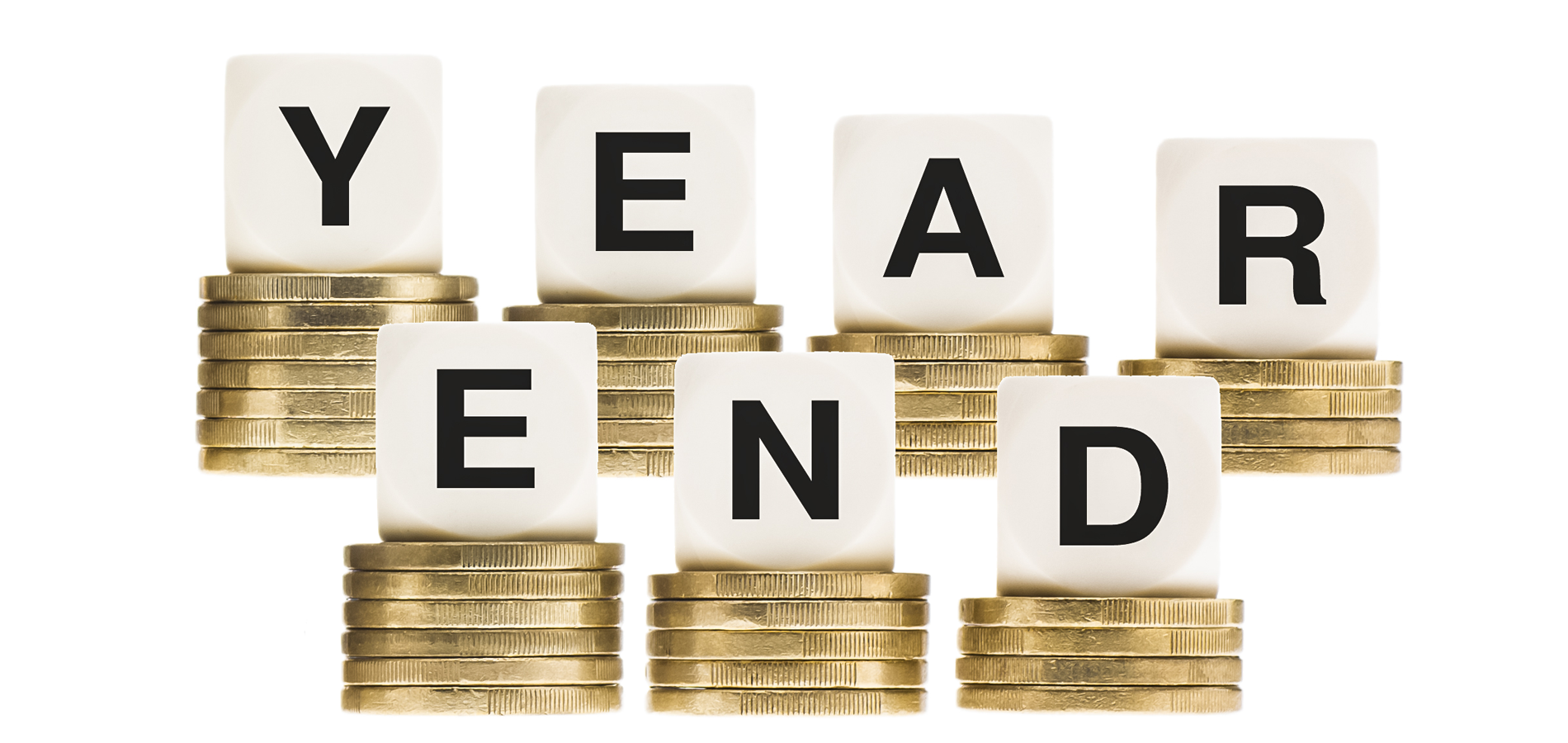Canadian Tax Lawyer: Top 2016 Year-End Income Tax Planning Tips
Everyone wants to reduce their income tax burden and the year-end offers the last chance for tax planning opportunities to lower taxes for this year. As such, in this article we present our top year-end income tax planning tips to reduce your 2016 taxes.
Top Individual Canadian Tax Lawyer Income Tax Planning Tips
Here are the best tax planning ideas from our Canadian income tax lawyers and advice as to how reduce taxes for Canadian individuals.
Pension Income Splitting
Canadians with pension income that qualifies for the pension tax credit can allocate up to half of this income to their spouse or common law partner. Tax planning to determine the optimal allocation must consider the criteria to qualify for Old Age Security payments and certain other personal tax credits so should be undertaken with our expert Canadian income tax lawyers.
RRSPs
RRSPs are the most important tax planning strategy for individual taxpayers. An RRSP provides a tax deduction for the contribution, while also allowing the amount to grow tax free until retirement.
Although the 2016 contribution deadline is February 28, 2017, Canadians should contribute to their RRSPs as soon as possible because the sooner the contributions are made, the more they benefit from compounded tax free growth.
Registered Disability Savings Plan (RDSP)
If you have disabled or infirm Dependents the Registered Disability Savings Plan allows parents and others to save for the long-term financial security of a disabled person. Since contributions to an RDSP are not tax deductible contributions that are withdrawn are not included in the income of the beneficiary. However there are certain income inclusions, notably the Canada disability savings grant (a matching government grant of up to $3,500), Canada disability savings bond, and investment income earned in the plan that will be included in the beneficiary’s income when withdrawn.
Open Tax Free Savings Accounts (TFSA)
The tax free savings account can be used to generate tax free savings. Although contributions to a TFSA are not tax deductible like RRSPs, the earnings from any investment source in the account are not subject to taxation when earned or when withdrawn.
Use Family Members to Income Split with TFSA
Generally when a Canadian gifts shares or other investments to a spouse or child, the attribution rules in the Income Tax Act kick in so that any income earned on the gifted amounts accrues to the parents personally. However, because income earned inside a TFSA is free of tax, Canadians can gift investments or shares to a family member’s TFSA account without having the income taxed back to them under the attribution rules. This is a big tax planning advantage around the TFSA personal contribution limit. Remember that gifting shares may result in tax on any accrued gain at the time of the gift. Also with a gift to a spouse any loss will be denied.
Registered Education Savings Plans (RESP) Contributions
Registered Education Savings Plans (RESP) allow saving money for a child’s education with the benefit of a helpful tax break. While the amounts contributed to the RESP are not income tax deductible, the funds themselves accumulate tax-free. The government also provides a no strings grant equal to 20% of a contribution to an RESP up to a maximum of $500 per annum with an upper limit of $7,200 over the life of the RESP. The contributions can accumulate income tax free, and the rules allow for a maximum contribution of $50,000 over the life of the Registered Education Savings Plan.
Eliminate Offside Assets in RRSPs
Some Canadians manage their own RRSP through discount brokerage accounts or other financial institutions. The risk in doing so is that not all Canadians are aware that only certain types of investments are eligible for RRSP accounts. Non-qualifying RRSP investments are taxed at 50% of the amount of the investment when placed into an RRSP.
Taxpayers can claim a credit on this punitive tax by disposing of the ineligible investments within the taxation year that they are purchased. Proper tax planning advice should be sought from a Canadian tax consultant to ensure that all non-qualifying investments are disposed of before they trigger adverse income tax penalties.
Home Buyers Plan Repayments
If you have withdrawn funds from your RRSP for an eligible first time home purchase you have to make annual repayments by December 31 of every year. If you fail to do so you will have an income inclusion.
Plan for Retirement
Taxpayers who are getting on in years and have an RRSP account will need to be aware of the RRSP rules. If a taxpayer is turning 71 in the current taxation year, they must convert their RRSP to a Registered Retirement Income Fund (“RRIF”) no later than December 31. Failure to do so means the full market value of the RRSP will be added back into income for the current year of the 71st birthday.
Be aware that there are options in addition to a RRIF; you can choose to receive an annuity, a lump sum payment or a combination. If the taxpayer has a spouse, they may also consider creating a spousal RRSP so that they can contribute to the plan until the spouse reaches 71. In order to do so, the taxpayer must have unused contribution room left on their personal RRSP account.
Top Income Tax Tips for Charitable Deductions
Accelerate Charitable Donations
Deductible amounts that are paid before Jan 1 can be deducted in the current year while a delay to after Dec 31 means the deduction is postponed by a full year. So Canadians should review their expected charitable donations for the first quarter of 2017 and accelerate those donations to 2016.
Benefit from the Time Limited First Time Donor Tax Credit
The Income Tax Act was amended a few years ago to offer an additional 25% tax credit for charitable donations made by a Canadian who has not claimed a charitable donation in the past. This “super credit” will expire in 2017, so taxpayers should plan to benefit before then.
Since the first time donation credit will only be available to any Canadian once, a good tax planning strategy would involve saving up all expected charitable donations for several taxation years to take advantage of the additional credit in one taxation year. This new “super credit” is limited to $1,000.
Donate Publicly Traded Shares Instead of Cash
Canadians can donate publicly traded shares to charities and increase their tax benefits. Not only is a charitable donation tax credit available, but by donating shares in this way the disposition will not be subject to capital gains taxation.
Top Employment Related Income Tax Planning Tips
While generally expenses incurred by an employee are not deductible there are certain specific exceptions. But beware, depending on the employee’s relationship with their employer there may be unforeseen tax problems.
Purchase Employment Assets
Although the Income Tax Act does not generally allow for the depreciation of employment related capital assets, employees are entitled to write off capital cost allowance (depreciation) on cars, planes and musical instruments. Employees planning on purchasing any of these assets should do so late in the year to enjoy the benefit of the capital cost allowance claim in the current year.
Tradespersons and apprentices are permitted to deduct the cost of their tools up to a prescribed limit. Qualifying individuals should make the purchase before the yearend to maximize deductions in this year.
Company Car Benefits
You are taxed for being provided with a company car, called the standby benefit, and for using it personally called the operating benefit. The taxable benefit is based on original cost of the automobile and does not decrease as it depreciates. You can eliminate the taxable car benefit by purchasing the car from your employer, can finance it by way of an interest-free loan from your boss and can then personally claim depreciation on the auto. You can also reduce the taxable car operating benefit if your auto is primarily used (normally greater than 50%) for business purposes and by keeping your personal use to less than 20,000 kilometers per year. Remember that you have to keep a car log of personal versus business use.
Loans from your Employer
If an employee has taken a loan from an employer it can lead to tax problems at the end of the year if proper Canadian tax lawyer tax planning is not undertaken. If the loan does not have a reasonable interest rate attached CRA can assess the employee for a taxable benefit received. The amount of taxable benefit is calculated as a percentage of the loan, in a manner similar to interest. Any interest that is paid will reduce the tax liability. If the required interest is not paid within 30 days of the end of the taxation year the employee will be deemed to have received a taxable employment benefit.
Employees need to ensure that not only are they being charged reasonable interest on any loans from employers, but also that they pay that interest within 30 days of year end to prevent income tax problems.
Adjust Source Deduction Amounts
If you have tax deductions that result in a large tax refund when you file your tax return you can submit a form TD-1 form early in 2017 to reduce the amount of source deductions withheld by your employer from each pay cheque.
Employment Related Courses
If your employer pays for an employment related course you won’t have a taxable benefit, while if you pay for it any increased salary will be taxable to you.
Give Employees Non-taxable Gifts
Non-taxable gifts of up to $500 every year and non-cash long-service and anniversary awards (also under $500 annually) can be given to arm’s length employees and are eligible as deductible business expenses by the employer.
Top Income Tax Investing Tips
While RRSPs and TFSAs are important vehicles for investments and tax planning, they do have contribution limits which generally results in money held outside of these accounts as well. So opportunities for tax planning around a taxpayer’s investments outside of the RRSP and TFSA are crucial.
Capital Gains & Losses
Investors with capital losses in the year can benefit from them to reduce capital gains for the current year and they may also be carried back to reduce capital gains from the 3 previous years and thereby allow the investor to receive a refund of previously paid income taxes. If you own capital property that has gone down in value, consider disposing of it in order to shelter any possible gains that you’ve made in the current year. If you have shares with accrued gains consider deferring the sale until the new year to defer the taxation by one year. This type of tax planning can be complex so suitable tax help from one of our top Canadian income tax lawyers is essential.
Delay Purchases of Mutual and Equity Funds
Canadians contemplating the purchase of mutual funds should consider waiting until the beginning of the new year to do so. A common accounting policy of both mutual and equity funds is to make distributions once per calendar year. Taxpayers who purchase these types of funds will be allocated a full share of the fund’s gains and income – meaning they will be allocated a full year’s worth for taxation purposes even though they have not held the funds for the entire year.
By waiting until the new-year before purchasing investors will not have to recognize the income, which was not even received, in their income until the next taxation year.
Review Interest Expenses
Investors should take some time before the year-end to review their debts and determine which interest expense amounts are tax deductible. Depending on the use of borrowed money there may be tax savings available. Generally speaking, if borrowed money is invested to earn business or investment income, it will be deductible for income tax.
Good tax-planning involves the careful structuring of borrowing practices. Investors should always ensure that they borrow for business or investment purposes wherever possible while utilizing non-borrowed money for personal expenses. By doing so, investors will be able to maximize their tax savings. This type of planning should be carefully implemented by an experienced Canadian tax lawyer to ensure income tax deductibility.
Use your Lifetime Capital Gains Exemption
Entrepreneurs who own SME shares of a qualified small business can make use of a lifetime capital gains exemption (LCGE) which is in excess of $800,000. Owner-managers who have shares in a small business should consider disposing of them to a spouse or corporation they control (called a crystallization) in order to enjoy the income tax benefits of the capital gains exemption.
SME owners who cannot claim the lifetime capital gains exemption may consider using the proceeds from the sale of small business shares to purchase shares in another qualified small business. The benefit of this tax plan is that the Income Tax Act allows the capital gain to be deferred until disposal of the new business if the new shares qualify.
Best Income Tax Planning Tips for SME Business Owners
The most opportunities for tax planning are available to taxpayers who carry on business, personally or through a corporation and this is where our expert Canadian tax planning lawyers can help reduce overall taxes paid by the owner and the SME business.
Crystallize your Goodwill
The effective tax rate on the sale of goodwill is increasing from as little as 13.5% to over 50% due to a tax change in the method of taxation of goodwill. By carrying out a crystallization reorganization of your eligible capital property (goodwill) before the end of December you can benefit from an overall absolute tax savings. Speak to one of our experienced Canadian tax lawyers right away if you have goodwill in your SME business.
Pay Salaries to Spouse/Family Members
Business owners are entitled to pay reasonable salaries to family members who work for the business. This is an effective method of splitting income and bringing down the overall tax rate. It also provides family members with contribution room in their own RRSPs.
Salaries must be reasonable in the context of the tasks the family members actually perform. Proper books and records are required in case of an audit in the future, so taxpayers should ensure strict compliance with the record keeping requirements of the tax act to avoid future unexpected tax problems.
Shareholder Loans from Corporation
A shareholder loan from a corporation has to be brought into income of the shareholder if it is outstanding for 2 corporate year ends. Make sure that any shareholder loans are repaid before this deadline.
Capital Gains Rollover on Small Corporation Shares
Individuals who disposed of shares of an eligible small business corporation are eligible for a tax free rollover of those proceeds of sale provided that shares of replacement eligible small business corporation were purchased during the year or up until April 30 of the following year.
Small Business Deduction
Canadian Controlled Private Corporations (“CCPC”s) with active income (business income not investment income) of up to $500,000 are permitted to utilize the small business tax deduction which reduces the rate of taxation on that active business income. A key tax strategy for corporations with active business income in excess of $500,000 is to declare a bonus to the owner managers of the company to reduce income to $500,000. The bonus must actually be paid within 180 days of the company’s year-end and all payroll deductions must be withheld and remitted.
Allowable Business Investment Loss “ABIL”
If a taxpayer incurs an allowable business investment loss (ABIL), which is a loss on an investment in shares or a debt of a small business, the ABIL is available to reduce overall taxable income, not just capital losses as with a regular capital loss. In order to claim an allowable business investment loss or ABIL ensure that shares have been sold or clearly establish the write-off of an investment bad debt that is regarded reasonably as being uncollectible.
Optimize Your Compensation Mix Strategy
The compensation strategy for an SME normally involves a combination of salary, bonuses and dividends. Bonuses allow payment to be deferred until after year-end. Consult with our knowledgeable Canadian tax lawyers to tax plan your compensation mix.
Timing of Expense Deductions
Taxpayers in business should accelerate expenses to make purchases that can be deducted this year rather than waiting for the new year. Employees are entitled to write off depreciation on cars, planes and musical instruments. Tradespersons and apprentices are permitted to deduct the cost of their tools up to a prescribed limit. Taxpayers planning on these types of purchases should do this year to enjoy the benefit of depreciation claims this year.
Plan to purchase any capital property before the tax year-end to be able to claim CCA deductions (at 50% of full rate) this year.
Related Reading: Year-End Tax Planning Insights for Canadian Small Business Owners
David J Rotfleisch, CPA, JD is the founding tax lawyer of Rotfleisch & Samulovitch P.C., a Toronto-based boutique tax law firm. With over 30 years of experience as both a lawyer and chartered professional accountant, he has helped start-up businesses, resident and non-resident business owners and corporations with their tax planning, with will and estate planning, voluntary disclosures and tax dispute resolution including tax litigation. www.Taxpage.com and david@taxpage.com
Write off 100% of your medical expenses
Write off 100% of your medical expenses
Are you an incorporated business owner with no employees? Learn how to use a Health Spending Account to pay for your medical expenses through your corporation:

Do you own a corporation with employees? Discover a tax deductible health and dental plan that has no premiums:

What's in this article





